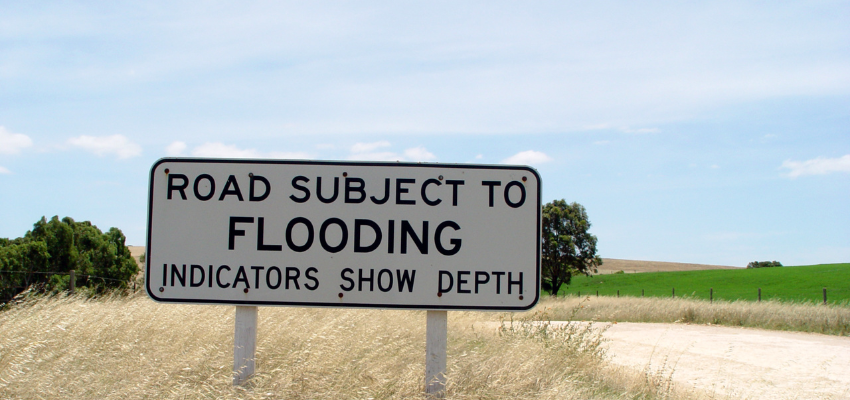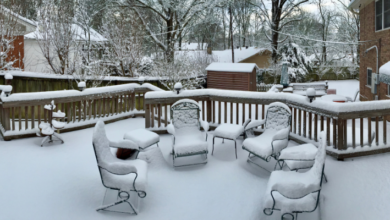The Devastating Impact of a Flood Warning

Introduction to Flood Warnings
Picture this: you’re enjoying a peaceful day at the beach, basking in the warm sun and listening to the soothing sound of crashing waves. Suddenly, your blissful paradise is shattered by an ominous warning blaring from nearby speakers. It’s a flood warning – and it sends chills down your spine.
Flood warnings are not to be taken lightly. They serve as critical alerts that can save lives and protect communities from devastating floods. Understanding what they mean, how they are issued, and most importantly, how to respond when one is issued is essential for ensuring personal safety and minimizing property damage.
In this blog post, we will delve into the world of flood warnings: their different types, causes, effects, preparation strategies, coping mechanisms, and everything in between. So grab a cup of coffee (or perhaps a life jacket), settle in comfortably on dry land (preferably higher ground), and let’s explore the impact of a coastal flood warning together!
Understanding the Different Types of Floods
Floods can occur in various forms, each with its own characteristics and causes. By understanding these different types of floods, we can better prepare for their potential impact.
One common type is flash flooding, which happens rapidly and without warning. This occurs when heavy rainfall overwhelms drainage systems or when a dam or levee fails. Flash floods are particularly dangerous as they can quickly engulf an area, leaving little time for evacuation.
Riverine flooding is another type that often occurs over a longer period of time. It happens when rivers overflow their banks due to prolonged rain or snowmelt upstream. Riverine floods may affect larger areas and take days or even weeks to recede.
Coastal flooding is a specific type that poses unique risks to coastal communities. It typically results from storm surges caused by tropical storms or hurricanes making landfall. These powerful weather events bring high winds and push large volumes of water onto the shorelines, causing significant damage to coastal areas.
Urban flooding primarily affects cities and towns where impermeable surfaces like pavement prevent proper absorption of rainwater into the ground. This leads to excessive runoff that inundates streets, basements, and other low-lying areas within urban environments.
Understanding these different types of floods allows us to tailor our response strategies accordingly. Whether it’s seeking higher ground during flash floods or reinforcing riverbanks before riverine flooding occurs, being aware of the specific threats associated with each type can help save lives and minimize property damage.
As climate change continues to alter weather patterns worldwide, it becomes increasingly important for individuals and communities alike to educate themselves about flood risks in their area and take necessary precautions against potential disasters.
The Causes and Effects of Floods
Floods can be caused by a variety of factors, both natural and man-made. One common cause is excessive rainfall, which can overwhelm rivers and drainage systems. When the amount of rain surpasses what the soil can absorb, it leads to runoff that collects in low-lying areas, resulting in flooding.
Another factor contributing to floods is rapid snowmelt. As temperatures rise during spring or after heavy winter storms, large amounts of snow melt quickly and flow into rivers and streams, causing them to overflow their banks.
In addition to these natural causes, human activities such as deforestation and urbanization play a role in increasing flood risk. Trees help absorb water from the ground, but when forests are cleared for agriculture or development projects, there is less vegetation available to soak up excess rainfall.
The effects of floods can be devastating. They not only result in property damage but also pose significant risks to human lives. Floodwaters can contaminate drinking water sources with pollutants and bacteria, leading to outbreaks of waterborne diseases.

Furthermore, floods often disrupt essential services like electricity supply and transportation networks. Roads become impassable due to high water levels or debris carried by the current. This isolation hampers rescue efforts and access to medical care for those affected by the flood.
Understanding the causes and effects of floods helps us appreciate the importance of preparedness measures during flood warnings. By staying informed about weather conditions and taking appropriate action when necessary, we can mitigate potential damages associated with flooding events.
How a Flood Warning is Issued
Understanding how a flood warning is issued is crucial for coastal communities at risk of flooding. The process involves multiple agencies and advanced technology to ensure timely and accurate information reaches the public.
Meteorological experts closely monitor weather patterns, river levels, and tidal data to identify potential flood risks. They use sophisticated computer models and historical data to predict the likelihood and severity of flooding events.
When conditions indicate an imminent threat, meteorologists liaise with local authorities responsible for issuing flood warnings. These warnings are typically issued through various channels such as radio broadcasts, emergency text alerts, social media updates, and official websites.
The issuance of a flood warning triggers a series of actions aimed at alerting residents in vulnerable areas. Local emergency management teams swing into action by coordinating evacuation plans, activating emergency shelters if necessary, and providing clear instructions on how to stay safe during the event.
In some cases, automated systems such as sirens or loudspeakers may be used to warn people living in high-risk areas where there may not be access to digital communication platforms. These methods help ensure that everyone receives critical notifications regardless of their access or ability to receive electronic messages.
It’s important for individuals who live in coastal regions prone to floods to familiarize themselves with their community’s specific protocol for receiving flood warnings. This includes knowing which sources provide reliable information about flood risks and heeding any advice or instructions given by local authorities.
By understanding how flood warnings are issued and taking these alerts seriously, individuals can better protect themselves from the devastating impact of a coastal flood event. Being prepared ahead of time can make all the difference in staying safe during an emergency situation like this one.
The Importance of Taking Action During a Flood Warning
When a flood warning is issued, taking immediate action can be the difference between life and death. It’s vital to understand that a flood warning means there is an imminent threat of flooding in your area. This is not the time to procrastinate or underestimate the situation.

One of the most important reasons to take action during a flood warning is to protect yourself and your loved ones from harm. Floodwaters can rise rapidly and become extremely dangerous, making it difficult to evacuate if you delay your response. By heeding the warnings and acting quickly, you give yourself the best chance of staying safe during this natural disaster.
Another crucial reason for taking action during a flood warning is to minimize property damage. Flooding can cause extensive destruction to homes, buildings, infrastructure, and personal belongings. Taking steps such as moving valuables to higher ground or shutting off electricity can help mitigate some of these damages.
Additionally, following evacuation orders or seeking higher ground ensures that emergency responders are not put at risk when they come to assist those in need. By leaving flooded areas promptly, you reduce their burden and allow them more time and resources to focus on rescue operations.
Furthermore, taking action during a flood warning demonstrates responsible citizenship within your community. Your actions set an example for others who may be unsure about how seriously they should treat the situation. Encouraging neighbors and friends to follow suit helps create a safer environment for everyone involved.
When faced with a coastal flood warning or any type of flood alert in your area, it’s essential not only for personal safety but also for protecting property and supporting emergency responders that swift action must be taken without hesitation or second-guessing.
Preparing for a Flood: Tips and Strategies
When it comes to preparing for a flood, it’s all about being proactive and taking the necessary steps to protect yourself, your loved ones, and your property. Here are some tips and strategies to help you stay safe during a flood warning.
Create an emergency plan with your family. This should include designated meeting points, emergency contact numbers, and instructions on what to do in case of evacuation. Make sure everyone knows where important documents like insurance policies are kept.
Next, gather essential supplies such as food, water, medication, flashlights, batteries, and a battery-powered radio. Consider storing these items in waterproof containers or bags.
It’s also crucial to secure your home by elevating valuable items off the ground level or moving them to higher floors if possible. Install flood barriers or sandbags around doors and windows to prevent water from entering.
Don’t forget about your pets! Have a plan in place for their safety as well. Keep extra food and supplies ready for them too.
Stay informed by monitoring weather updates regularly through reliable sources like local news channels or the National Weather Service website. Sign up for text alerts so that you can receive timely information directly on your phone.
Lastly but importantly… Stay calm! Panic only hinders decision-making abilities during an emergency situation. Trust in the preparations you’ve made thus far.
Remember that these tips are just guidelines; each situation is unique and may require additional measures depending on various factors such as location or severity of the flood warning issued. The key is staying informed ahead of time so that when disaster strikes – because let’s face it – nature doesn’t always play by our rules– you’re prepared!
By following these tips and strategies before a coastal flood warning occurs,
you will be better equipped to handle whatever challenges come your way.
Stay safe out there!
Coping with the Aftermath of a Flood
Coping with the aftermath of a flood can be an overwhelming and challenging experience. The devastation left behind by rising waters can affect not only your physical surroundings but also your emotional well-being. It’s important to remember that you are not alone in this journey, and there are resources available to help you rebuild and recover.
One of the first steps in coping with the aftermath is ensuring your safety. Before returning to your home or property, make sure it has been deemed safe by local authorities. Floodwaters can cause structural damage and create hazards such as electrical issues or contaminated water. Always wear protective gear such as gloves and masks when cleaning up debris or handling contaminated materials.
Next, document the damage for insurance purposes. Take photographs or videos of each affected area before starting any cleanup efforts. This evidence will be crucial when filing a claim with your insurance company.
Once you have documented the damage, begin removing any standing water from your home using pumps or wet-dry vacuums if possible. Open windows and doors to promote air circulation and aid in drying out affected areas.
As you start clearing out debris, prioritize salvaging valuable items that hold sentimental value while disposing of damaged items properly following local guidelines.
Seeking support during this challenging time is essential for both practical assistance and emotional well-being. Reach out to family members, friends, neighbors, community organizations, or disaster relief agencies who may offer assistance with cleaning up or connecting you with resources for recovery.
Remember to take care of yourself mentally and emotionally as well during this difficult period. Allow yourself time to process what has happened and don’t hesitate to seek professional help if needed.
While coping with the aftermath of a flood is undoubtedly difficult, staying positive through small victories can make all the difference in rebuilding your life after such a devastating event.
Conclusion: Staying Safe and Informed During a Flood Warning
In times of natural disasters like floods, it is crucial to prioritize our safety and well-being. By understanding the different types of floods, their causes, and effects, we can better prepare ourselves for potential risks.
Whether you live in a coastal area or not, being proactive can save lives. Stay informed through reliable sources such as local authorities or weather agencies who provide real-time updates on the situation.
Preparation plays a significant role in mitigating the impact of flooding. Create an emergency plan with your family members or household members so that everyone knows what to do when faced with a flood warning. Stock up on emergency supplies such as food, water, batteries, flashlights, and medical necessities.
Do not attempt to drive through flooded roads or walk across flowing water – this poses immense danger that could lead to injury or even death.
After experiencing a flood event, coping with its aftermath can be challenging both emotionally and physically. Seek support from friends and family while also reaching out to community resources or disaster relief organizations for assistance in recovery efforts.
Remember that staying safe during a flood warning requires preparation, awareness,and taking heed of official warnings issued by experts who possess valuable knowledge about these events’ nature and severity levels



